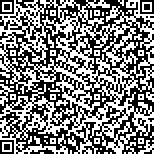| 引用本文: | 何卫锋,李玉琴,李应红,李靖,聂祥樊.激光冲击波增强38CrMoAl钢渗氮耐磨性能研究[J].材料科学与工艺,2014,22(6):36-40.DOI:10.11951/j.issn.1005-0299.20140607. |
| HE Weifeng,LI Yuqin,LI Yinghong,LI Jing,NIE Xiangfan.Study on wear resistance of 38CrMoAl steel with nitridation enhanced by laser shock wave[J].Materials Science and Technology,2014,22(6):36-40.DOI:10.11951/j.issn.1005-0299.20140607. |
|
| 摘要: |
| 为提高38CrMoAl钢渗氮层的质量和耐磨性能,提出并采用激光冲击增强渗氮的方法,进行了不同处理状态试样的磨损性能试验,采用XRD、SEM对试样微观组织进行分析,并探讨激光冲击增强渗氮的机理.试验结果表明:与渗氮相比,激光冲击波处理后渗氮试样的比磨损率为9.47×10-15m3/Nm,降低了50%,其表面显微硬度提高了12%;激光冲击波作用使表层材料产生高密度位错,甚至细化晶粒,从而在渗氮过程中增加了扩散通道,使更多的N原子间隙固溶到α-Fe中,对渗层起到了固溶强化的作用;形成的渗氮层微观组织致密,无缺陷,大量氮化物沿晶界高度弥散均匀分布,起到弥散强化的作用,从而提高了材料耐磨性能. |
| 关键词: 激光 冲击波 渗氮 38CrMoAl钢 显微硬度 高密度位错 耐磨性能 |
| DOI:10.11951/j.issn.1005-0299.20140607 |
| 分类号:TG665 |
| 基金项目:国家自然科学基金资助项目(51205406);陕西省自然科学基金资助项目(2012JQ6012). |
|
| Study on wear resistance of 38CrMoAl steel with nitridation enhanced by laser shock wave |
|
HE Weifeng, LI Yuqin, LI Yinghong, LI Jing, NIE Xiangfan
|
|
(Science and Technology on Plasma Dynamics Lab, Air Force Engineering University, Xi′an 710038, China)
|
| Abstract: |
| To improve the quality of nitriding layer and wear resistance of 38CrMoAl-steel, a new method was put forward by which the sample was treated by laser shock processing before nitriding. The wear resistances of different samples with nitriding and nitriding after laser shock processing were tested by the ball milling experiment, and their microstructures were analyzed by XRD and SEM. The enhancement mechanism of wear resistance by laser shock processing before nitriding was also discussed. The wear rate of the sample with laser shock processing was 9.47×10-15 m3/Nm, reducing about 50% compared to the samples with nitriding only, and the surface micro hardness was increased by 12%. The grains in the surface layer were refined by laser shock wave, and there were many high density dislocations. The grain refinements and the high density dislocations near the surface provided more channels for the nitrogen diffusion process. More nitrogen infiltrated into the α-Fe matrix metal, resulting in solution strengthening. On the other hand, the microstructure of the nitriding layer was dense, and defect-free, with a large number of nitrides distributed along the grain boundary. |
| Key words: laser shock wave nitriding 38CrMoAl-steel micro hardness high density dislocation wear resistance |






